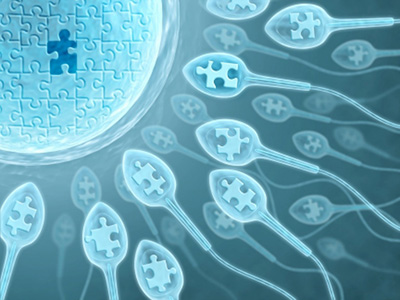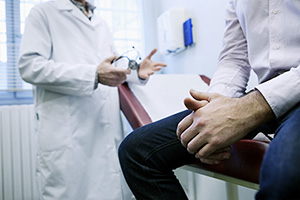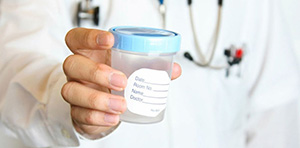
When a couple is preparing for IVF, the man is prescribed a seemingly routine examination - a spermogram. They say to him: “Prepare and come”, and he often does not even know, the spermogram is what it is.
Let's explain: this is the name of the analysis of semen (semen). This is a very important analysis that allows you to develop tactics - no, not treatment, but further actions so that fertilization is as successful as possible.
Spermogram for IVF
So, a spermogram is an analysis that fully describes the properties of semen, namely:
- its color;
- consistency;
- volume;
- viscosity;
- smell;
- pH;
- sperm quantity and quality;
- the presence and number of other cells (for example, erythrocytes, leukocytes).
 Each indicator of this analysis is important for determining the method by which the fertilization of the egg will be carried out:
Each indicator of this analysis is important for determining the method by which the fertilization of the egg will be carried out:
- if all the indicators, and, in particular, the characteristics of the spermatozoa correspond to the norm, it is possible to inject the seminal fluid to the prepared oocytes without any additional actions;
- if the quality of the germ cells suffers, it will be necessary to apply the introduction of sperm directly into the egg with the help of its puncture (this can be the ICSI, IMSI or PIXI method - the choice is also made according to the spermogram data);
- when a Kruger spermogram performed several times reveals significant defects in male cells, doctors can resort to obtaining spermatozoa by puncture of testicular tissue (TESE method or other similar method).
Before IVF, a detailed spermogram is required. It is she who takes into account not only the number of sperm, but also the nature of their mobility, and morphological data, that is, the structure of the head, neck and tail of the cell. This is very important for choosing the method of fertilization of the egg.
How long does a spermogram take?

By time, the analysis is performed within 1 business day.
Spermogram: how to prepare
The quality of semen is influenced by many factors: the food taken, the nature of physical activity, the drugs used, alcohol, and the length of the abstinence period. Therefore, in order for the doctor to assess the initial characteristics of the semen, it is necessary to prepare for the analysis. These are some simple restrictions that apply 5 days before the study. They include:
- not having sex;
- do not drink alcohol or smoke;
- exclude warm baths, baths, saunas;
- do not wear underwear that will squeeze the testicles;
- if possible - exclude taking any drugs, unless they are vital;
- get enough sleep.
If the spermogram is "bad", it will be possible to retake it no earlier than 2 weeks later, excluding all those factors that the doctor will name as possible causes of deviations from the norm.
Spermogram how the analysis is done
The rules for taking a spermogram analysis are very simple. On the right day, the man comes to the clinic, where he is given a sterile disposable container for the delivery of semen. He is taken to a closed booth containing erotic magazines so that he can donate semen by masturbating. Before that, he must thoroughly wash his hands and conduct hygiene of the genitals.
In some clinics, a man can take his wife with him so that she, with the help of manual stimulation, helps him with this test. You can take the analysis at home, but you need to deliver the material quickly, within 1-1.5 hours. This issue is agreed with the clinic in advance.
How to read the spermogram results? It is necessary to compare the obtained data with those indicated in the column labeled either "Norm" or "Reference values". Even if the indicators are far from normal, he should not take any action before consulting an andrologist.
Here are some reference values:
- quantity - not less than 15 million / ml;
- volume - more than 1.5 ml;
- color - white-gray;
- pH - from 7.2;
- general mobility - 40% or more;
- progressively mobile - 32% or more;
- agglutination - absent;
- morphologically normal - more than 4%;
- leukocytes - less than 1 million / ml;
- erythrocytes - no.
